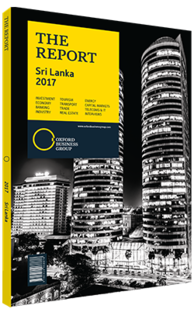Echoes of the colonial past can be seen through the fortresses that still dot the island’s landscape
Having arrived in Sri Lanka in 1505, Portuguese explorers quickly established a foothold via their trading relationship with the kingdom of Kotte. In 1521 an uprising in the kingdom saw King Vijayabahu VII’s three sons mutiny and kill their father in a bid for power, in what would become known as the “Spoiling of Vijayabahu”. Soon afterwards, the kingdom was divided into three, allowing the Portuguese an entrance into domestic politics. In only a short period of time, the kingdom of Kotte had essentially become a vassal state of Portugal. Soon other kingdoms would fold, as Portuguese rule began a domino effect on the island. Only the kingdom of Kandy stood in the way of their total conquest of Sri Lanka.
Competing Factions
On three occasions, in 1594, 1602 and 1630, the Portuguese were defeated in their attempts to conquer Kandy, and soon enough Kandy negotiated a strategic alliance with Dutch colonial forces in the region. In 1638 Portuguese soldiers were sent to prevent such an alliance, but they were soundly defeated. The allied Dutch-Kandyan later captured the Batticaloa and Negombo forts, which was accompanied by the capture of the Trincomalee fort by the Dutch army. Consequently, preparations were made for the siege of Portuguese Galle.
The Portuguese fort of Santa Cruz de Gale was situated at the western edge of the Bay of Galle. The landmass is elevated at its southern tip, but gradually slopes down towards the isthmus where it connects with the mainland where a wall extended from sea side to the bay side enclosing the city. Three bastions were built to defend the wall from sea bound invaders.
At the southern tip of the fort, the Bastion of Santa Cruz commanded the western approaches to the bay. However, at the time of the siege, the fort lacked the necessary guns and artillery needed to propel defenders, and its walls were in ruins. In 1636 Antonio van Diemen was appointed governor general of Dutch East India Company. He sought to change Dutch naval strategy by blockading the Goa fort in southern India in order to launch attacks across other Portuguese colonies, thereby preventing the Portuguese from mounting a credible defence of their treasures and their key colonial territories.
Under Siege
The siege of the Portuguese fort Santa Cruz de Gale at Galle in 1640 took place during the Dutch–Portuguese and Sinhalese–Portuguese Wars. During this time, Galle was prized for its natural harbours, fertile soil and strategic coastal defence positioning. The origin story of the famous coast is, however, disputed. Legend has it that one morning the sound of a cock crowing made explorer, Lorenzo de Almeida, realise that he had reached land, with gallo meaning cock in Portuguese. The Dutch had an eye on Galle for some time, and with their arrival 50 years after the Portuguese, they formed a strategic alliance with the kingdom of Kandy to seize the fort.
On March 8, 1640, Willem Jacobszoon Coster of Akersloot, a Dutch commander, launched a successful assault on the idyllic Portuguese colony at the Bay of Galle, and only four days later it was surrendered to the Dutch, who would go on to use the fort as a springboard to attack Goa and other South Indian Portuguese colonies. In March 1640 a fleet of five Dutch ships anchored off the coast of Colombo convinced the Portuguese of looming threat.
António Mascarenhas, the governor of Portuguese Ceylon, hastily organised a relief force. Additional reinforcements marched along the coast. No Kandyan troops were met as they advanced to Galle without resistance, however, by that time, it became clear that the unit would not reach Galle in a timely enough fashion to thwart the Dutch onslaught. Additional plans were made with other Portuguese forces to meet the threat, and they managed to arrive in time to combat the offensive. A battle would ensue over the next four days and ultimately, the Dutch would emerge victorious, and the Portuguese were vanquished.
You have reached the limit of premium articles you can view for free.
Choose from the options below to purchase print or digital editions of our Reports. You can also purchase a website subscription giving you unlimited access to all of our Reports online for 12 months.
If you have already purchased this Report or have a website subscription, please login to continue.

